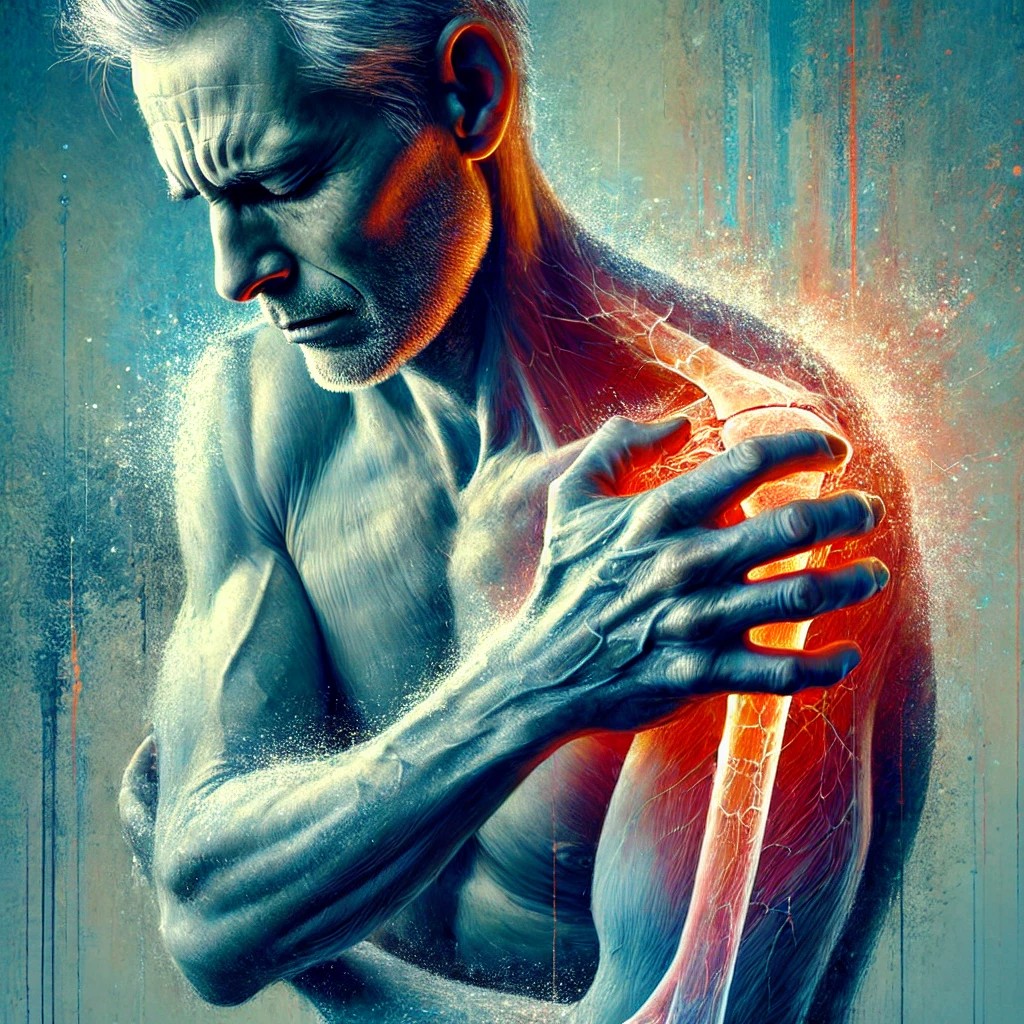How Dry Needling Can Help with Frozen Shoulder (Adhesive Capsulitis): A Science-Backed Approach to Pain…

Slip and Fall injury in Older Adults: An overview and how Acupuncture can help.
Every year in the US, millions of adults slip and fall, causing moderate to severe injuries, such as hip fractures and head traumas, and can increase the risk of early death 1 . Fortunately, falls are largely preventable. Acupuncture and traditional Chinese medicine can help strengthen the body in a holistic fashion and decrease the likelihood of severe injury. A snapshot of the 2013 statistics shows how dramatic slip and fall problems are in America:1
- One out of three older adults (those aged 65 or older) falls each year1 but less than half talk to their healthcare providers about it.2
- Among older adults, falls are the leading cause of both fatal and nonfatal injuries.3
- In 2013, 2.5 million nonfatal falls among older adults were treated in emergency departments and more than 734,000 of these patients were hospitalized.3
- In 2012, the direct medical costs of falls, adjusted for inflation, were $30 billion.4
- Twenty to thirty percent of people who fall suffer moderate to severe injuries such as lacerations, hip fractures, and head traumas.5,6 These injuries can make it hard to get around or live independently, and increase the risk of early death.
- Falls are the most common cause of traumatic brain injuries (TBI).5
- In 2000, 46% of fatal falls among older adults were due to TBI.7
- Most fractures among older adults are caused by falls.8 The most common are fractures of the spine, hip, forearm, leg, ankle, pelvis, upper arm, and hand.9
- Many people who fall, even if they are not injured, develop a fear of falling.10 This fear may cause them to limit their activities, which leads to reduced mobility and loss of physical fitness, and in turn increases their actual risk of falling.11
Fall Injuries
- People age 75 and older who fall are four to five times more likely than those age 65 to 74 to be admitted to a long-term care facility for a year or longer.13
- Rates of fall-related fractures among older women are more than twice those for men.14
- Over 95% of hip fractures are caused by falls.15 In 2010, there were 258,000 hip fractures and the rate for women was almost twice the rate for men.17
- White women have significantly higher hip fracture rates than black women.17
What can you do to prevent injuries?
Adults can stay healthy and independent to reduce their chances of falling.18,19 Specifically, you can:
- Exercise regularly. Exercise focuses on increasing leg strength and improving balance, aspects that can get more challenging over time. Chinese Medicine Movement Therapies such as Tai Chi and medical Qi Gong programs are especially good for promoting balance and core strength.1
- Get acupuncture regularly. Acupuncture therapy stimulates the body’s natural muscle response in a gentle way and leads to greater body awareness and improved muscle tone and stability.
- Take Tonic Herbs on daily basis. Tonic herbs boost the immune system and calm the nervous system without the side effects of pharmaceutical drugs. A calm and balanced nervous system is the first step towards stability and preventing falls.
- Ask your acupuncturist to review your medicines—both prescription and over-the counter—to identify medicines that might cause side effects or interactions such as dizziness or drowsiness.1
- Have your eyes checked by an eye doctor at least once a year and update your eyeglasses, if needed. Consider getting a pair with single vision distance lenses for some activities such as walking outside.1
- Improve home safety by reducing tripping hazards. Install grab bars inside and outside the tub or shower and next to the toilet, or add railings on both sides of stairways, and improve the lighting in your house.1
To lower their hip fracture risk, you can:
- Get adequate calcium and vitamin D—from food and/or from supplements.1
- Do stability, balance and weight bearing exercise, such as Tai Chi, Qi Gong and Movement Therapy.1
- Get screened and, if needed, treated for osteoporosis.1
References
-
Tromp AM, Pluijm SMF, Smit JH, et al. Fall-risk screening test: a prospective study on predictors for falls in community-dwelling elderly. J Clin Epidemiol 2001;54(8):837–844.
-
Stevens JA, Ballesteros MF, Mack KA, Rudd RA, DeCaro E, Adler G. Gender differences in seeking care for falls in the aged Medicare Population. American Journal of Preventive Medicine 2012;43:59–62.
-
Centers for Disease Control and Prevention, National Center for Injury Prevention and Control. Web–based Injury Statistics Query and Reporting System (WISQARS) [online]. Accessed August 15, 2013.
-
Stevens JA, Corso PS, Finkelstein EA, Miller TR. The costs of fatal and nonfatal falls among older adults. Injury Prevention 2006a;12:290–5.
-
Sterling DA, O’Connor JA, Bonadies J. Geriatric falls: injury severity is high and disproportionate to mechanism. Journal of Trauma–Injury, Infection and Critical Care 2001;50(1):116–9.
-
Alexander BH, Rivara FP, Wolf ME. The cost and frequency of hospitalization for fall–related injuries in older adults. American Journal of Public Health 1992;82(7):1020–3.
-
Stevens JA. Fatalities and injuries from falls among older adults – United States, 1993–2003 and 2001–2005. MMWR 2006b;55.45:1222–24.
-
Jager TE, Weiss HB, Coben JH, Pepe PE. Traumatic brain injuries evaluated in U.S. emergency departments, 1992–1994. Academic Emergency Medicine 2000;7(2):134–40.
-
Scheffer AC, Schuurmans MJ, Van Dijk N, Van Der Hoof T. Fear of falling: measurement strategy, prevalence, risk factors and consequences among older persons. Age and Ageing 2008;37:19–24.
-
Bell AJ, Talbot-Stern JK, Hennessy A. Characteristics and outcomes of older patients presenting to the emergency department after a fall: a retrospective analysis. Medical Journal of Australia 2000;173(4):176–7.
-
Vellas BJ, Wayne SJ, Romero LJ, Baumgartner RN, Garry PJ. Fear of falling and restriction of mobility in elderly fallers. Age and Ageing 1997;26:189–193.
-
Stevens JA, Dellinger AM. Motor vehicle and fall related deaths among older Americans 1990–98: sex, race, and ethnic disparities. Injury Prevention 2002;8:272–5.
-
Scott JC. Osteoporosis and hip fractures. Rheumatic Diseases Clinics of North America 1990;16(3):717–40.
-
Donald IP, Bulpitt CJ. The prognosis of falls in elderly people living at home. Age and Ageing 1999;28:121–5.
-
Hayes WC, Myers ER, Morris JN, et al. Impact near the hip dominates fracture risk in elderly nursing home residents who fall. Calcified Tissue International 1993; 52:192–198.
-
Stevens JA, Sogolow ED. Gender differences for non-fatal unintentional fall related injuries among older adults. Injury Prevention 2005b;11:115–9.
-
National Hospital Discharge Survey (NHDS), National Center for Health Statistics. Available at:www.cdc.gov/nchs/hdi.htm. Assessed September 14, 2011.
-
Gillespie, LD, Robertson, MC, Gillespie, WH, Sherrington C, Gates S, Clemson LM, Lamb SE. Interventions for preventing falls in older people living in the community. Cochrane Database of Systematic Reviews 2012, Issue 9. Art. No.: CD007146. DOI: 10.1002/14651858.CD007146.pub3.
-
Moyer VA. Prevention of Falls in Community-Dwelling Older Adults: U.S. Preventive Services Task Force Recommendation Statement. Annals of Internal Medicine 2012;157(3):197–204.



